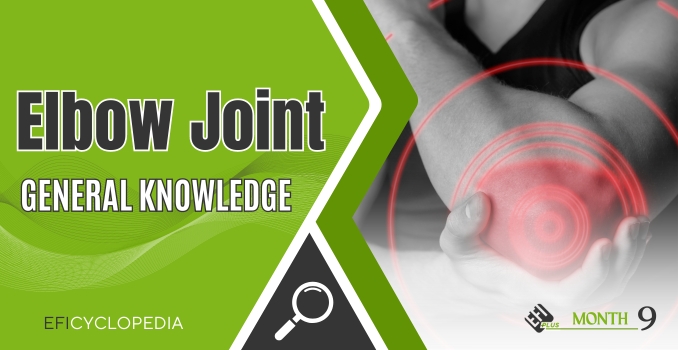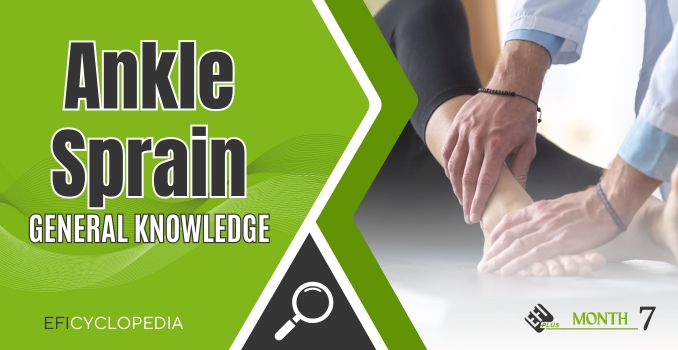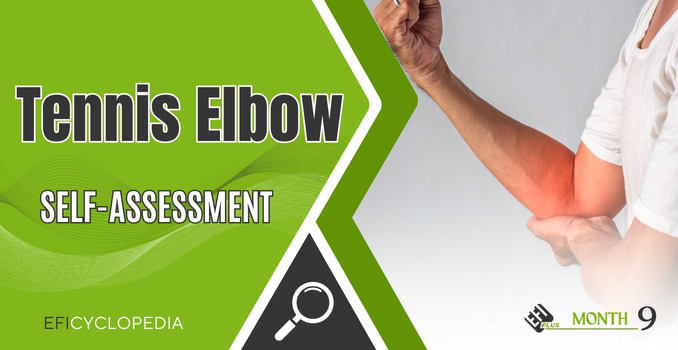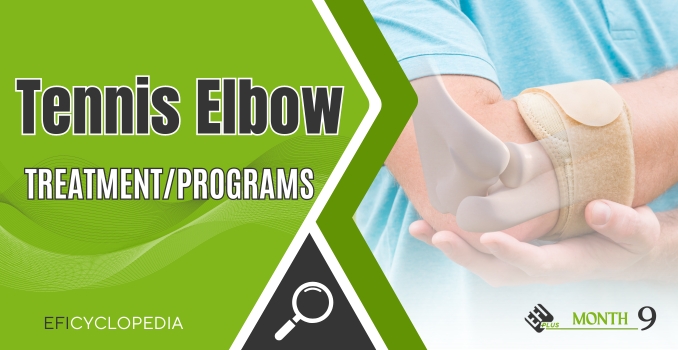Month 9
Tired of tennis elbow pain holding you back? We have the solutions you need!
For the Month 9 on EFIcyclopedia, we're tackling tennis elbow! It's a common condition that can develop not just from playing tennis but also from everyday activities. We'll delve into the mechanism of this injury, discuss the root causes in more detail, and explore management options you can try to get you back in the game.
By understanding the muscles and joints involved in tennis elbow, you'll gain valuable insights to manage your pain and unlock your body's full potential.
WHAT YOU NEED TO KNOW: Understanding the complexities of tennis elbow pain is key to finding solutions. This in-depth manual equips you with the knowledge you need, delving into the elbow's structure and uncovering the root causes of this injury.
- Understanding Tennis Elbow Pain: This article provides an informative definition of tennis elbow pain, the joints and muscles involved, and its causes.
Clinical presentations: Definitive signs and symptoms of tennis elbow pain and how they differ from other elbow injuries.
HOW: This section will equip you with knowledge of the different types of elbow joint assessment tests. These include diagnostic procedures like X-rays, CT scans, or MRIs, as well as special physical tests that can help determine if you have a tennis elbow injury.
WHAT TO DO: Prepare to explore the treatment and activity modifications you can make to avoid the recurrence of tennis elbow pain.
- Prevention and Management: Enhance the health of your elbow joints and minimize the risk of tennis elbow through these effective lifestyle modifications, prevention, and self-care tips.
Individualized Management Approaches: Engage in specific exercises designed to strengthen and stretch your elbow muscles. This can improve your elbow joint's stability, flexibility, and strength, ultimately reducing pain and the risk of re-injury.
WHY THIS MATTERS: The more you learn about your body, the stronger your ability to make informed health decisions becomes.
- Enhanced Quality of Life: Pain that arises on your elbow joint can hinder you from doing your daily activities and overall affect the quality of your life. Therefore, understanding the root cause of this pain is crucial, as it empowers individuals to implement targeted interventions that effectively alleviate the pain.
Informed Decision-Making: By understanding the biomechanics of your elbow joint and the mechanism of injury of tennis elbow, you'll be empowered to make informed decisions when choosing treatment strategies for it. This will ultimately help you improve your condition and prevent future injuries.
Unlock the knowledge you need to conquer tennis elbow and return to the activities you love. Don't let pain sideline you! Start your journey to wellness today! Join us for Month 9 of the EFIcyclopedia, and we'll guide you every step of the way.

Elbow Joint - General Knowledge
The elbow joint is pivotal in facilitating various movements and activities involving the arm. This joint marks the convergence of the humerus, the upper arm bone, with the radius and ulna, the two forearm bones, effectively bridging the upper arm to the forearm.

Ankle - General Knowledge
The ankle joint is as vital and versatile as the other structures in human anatomy. Delving into its anatomical complexities, physiological roles, and clinical ramifications is a journey that warrants in-depth exploration. Thoroughly scrutinizing the basic principles and latest developments and comprehending every aspect of this extraordinary joint's anatomy, biomechanics, and functionality enables healthcare providers to accurately evaluate patients and create customized treatment strategies aligned with their unique needs and objectives.

Tennis Elbow - General Knowledge
Feeling pain on the outside of your elbow? It could be tennis elbow or lateral epicondylitis. This happens when the muscles and tendons that extend your wrist and fingers are overworked.
Tennis elbow isn't just for athletes! While it's common in racquet sports like tennis and badminton, repetitive motions from jobs like plumbing, painting, carpentry, and butchering can also cause it.

Tennis Elbow - Self Assessment
Tennis elbow, medically known as lateral epicondylitis. is a common musculoskeletal condition characterized by pain and tenderness on the outer aspect of the elbow. Understanding the signs and symptoms of tennis elbow is crucial for accurate diagnosis and effective management.

Tennis Elbow- Treatment/ Programs
Pain-relievers like paracetamol and NSAIDs such as ibuprofen can help alleviate mild pain and inflammation associated with tennis elbow.
NSAIDs come in tablet form or as creams and gels (topical NSAIDs) that are applied directly to the affected area.
